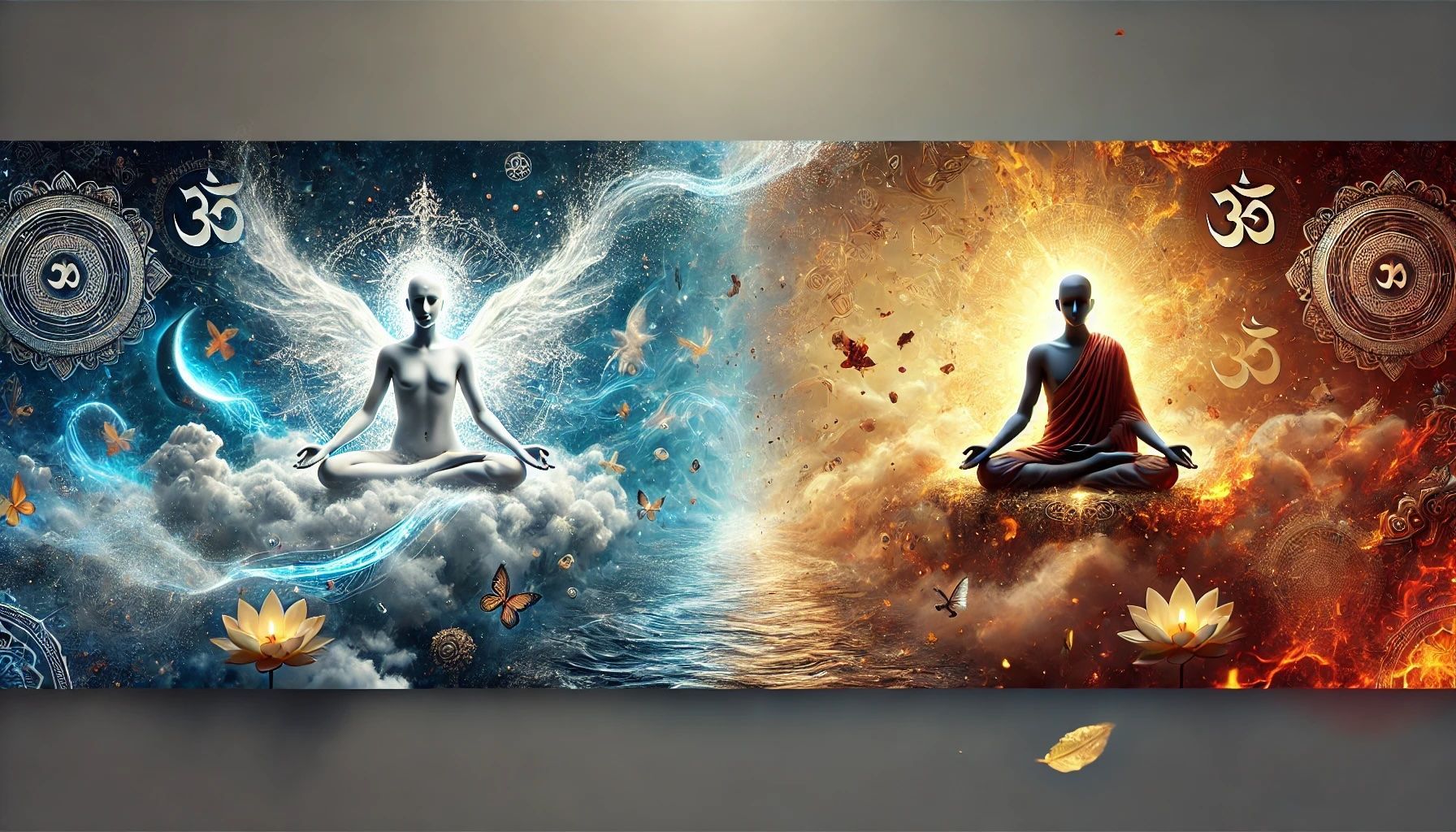Atman vs Anatman
I recently viewed a lengthy video of a talk by Swami Sarvapriyananda contrasting the Hindu belief in Atman and the Buddhist principle of anatman.

The Swami said that in Hindu belief, Atman is an eternal Self. He said that one could use “God” to refer to it, and indeed the belief does bear resemblance to the Christian God the Father. In Christianity, God causes all things. The great spiritual teacher from the Hindu tradition, Ramana Maharshi (in The Spiritual Teaching of Ramana Maharshi, 1988, p. 9) says that “the supreme power of God makes all things move.” Moreover, in Christianity, God also causes our actions as human beings. Just so, in a reference I cannot find, Ramana Maharshi says that people are God as an engineer, God as a farmer, and so on.
In his talk, Swami Sarvapriyananda continued that Chandrakiti (died about 670), a Buddhist scholar teaching at the University of Nalanda in India, attacked the idea of Atman, advancing the Buddhist principle of anatman or non-self. According to the Swami, Chandrakiti argued that there could be no self within or in charge of the skandhas, or in other words the whole human being. Thus Chandrakiti refuted the concept of Atman as the ground of all existence that could also dwell in a person and determine his or her actions.
If I understand Swami Sarvapriyananda correctly, he is saying that there is no concept of Atman in Buddhism at all. The Swami is a Hindu monk and head of the Vedanta Society of New York. It is possible that he is not familiar with a strain of thought in Buddhism that is like the Atman concept.
This strain is to be found in Keizan’s Transmission of Light (2002). Keizan is considered the “Great Patriarch” of Soto Zen. He passed away in 1325, 72 years after the passing of Dogen, the “Highest Patriarch” of Soto Zen.
Keizan says, “Do you not realize that you respond when called and you get where you are going by following directions? This does not come from deliberate thought or conscious knowledge – it is the host within you.” (p. 26) Keizan’s “host” is “Old Shakyamuni Buddha.” He continues, “Old Shakyamuni Buddha is with you all the time, whatever you are doing; he is conversing and exchanging greetings with you, never apart from you for a moment.” (pp. 6-7) He continues about the Old Buddha, “. . .Totally unknown it follows and accompanies oneself, yet one does not discern it at all.”(p. 46)
Keizan’s Old Buddha is a benign power; he is a buddy who walks and talks with us. Benignity is also true of the Hindu Atman. The renowned teacher from the Hindu tradition, Nisargadatta, was once asked, “Is destiny the same as grace?” He replied, “Absolutely. Accept life as it comes and you will find it a blessing.” (I Am That, 1973, p. 491)
Zazen practitioners may develop a sense of the benign Old Buddha. I recall that Reb Anderson, the head dharma teacher of the San Francisco Zen Center, once told a large audience at Green Gulch Farm that he could speak with Buddha and receive responses. Though zazen, one can grow into a sense of being accompanied and befriended by a kindly Old Buddha.
All Rights Reserved | Zazen Essays